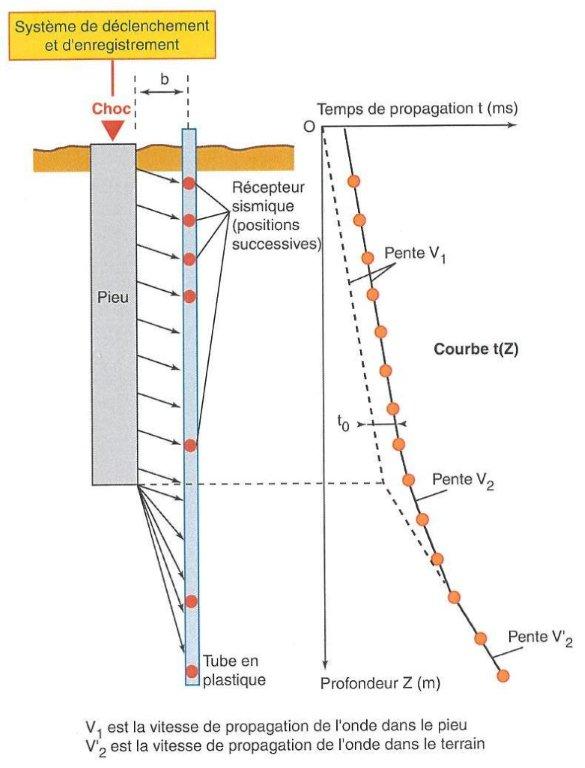The parallel seismic (PS) testing method is a standardised method used to determine the depth of the foundations of a building or structure, but also to control foundations devoid of re-entrant tubes for sonic investigations and when the impedance method cannot be used.
A borehole is drilled in parallel of a foundation generatrix, as close as possible to it and less than 1.5m away, up to 5meters below the appraised foundation end point. A PVC tube is placed in the borehole and sealed with cement grout on all its height.
We then measure the travel time of a seismic wave between the top of the foundations and a line of seismic sensors placed in the borehole (0.5m space between each on all of the borehole’s height). A seismic wave is generated by creating a chock at the top of the foundations or on a structural element directly united to the top of the foundations.
Seismic waves are recorded with a high-precision digital seismic recorder. The data is saved and processed by the engineering department to create a chart of waves’ travel time depending on depth. From this chart, we determine the depth of the foundations with a precision of a few decimetres.



